Abstract
Dinitrochlorobenzene (DNCB) induced delayed hypersensitivity but no eosinophilia in guinea-pigs from two colonies. Citraconic anhydride (CA) induced delayed hypersensitivity and eosinophilia of the blood and bone marrow, and sites of skin tests were also infiltrated by eosinophils. In adoptive transfer of lymphocytes separated from peritoneal exudate cells of strain XIII-sensitized donors, lymphocytes from DNCB-sensitized guinea-pigs transferred antigen-specific delayed hypersensitivity; lymphocytes from CA-sensitized guinea-pigs transferred delayed hypersensitivity, and induced eosinophilia of the blood and bone marrow of the recipients. Treatment of the lymphocytes before transfer with antilymphocyte (thymocyte) globulin or puromycin suppressed the manifestations in the recipients; normal globulin did not. Active sensitization with DNCB induced formation of small amounts, and with CA larger amounts of anaphylactic antibody. Sera from the actively sensitized animals elicited no significant eosinophilia of blood or bone marrow in one group of recipients. Passive anaphylaxis elicited a transient eosinophilia of the blood, but not of the bone marrow. It is postulated that T-helper cells interact with B-lymphocyte precursors, particularly IgE B cells, to stimulate eosinopoeisis. This results in a reserve of mature eosinophils that may be released in any subsequent anaphylactic event.
Full text
PDF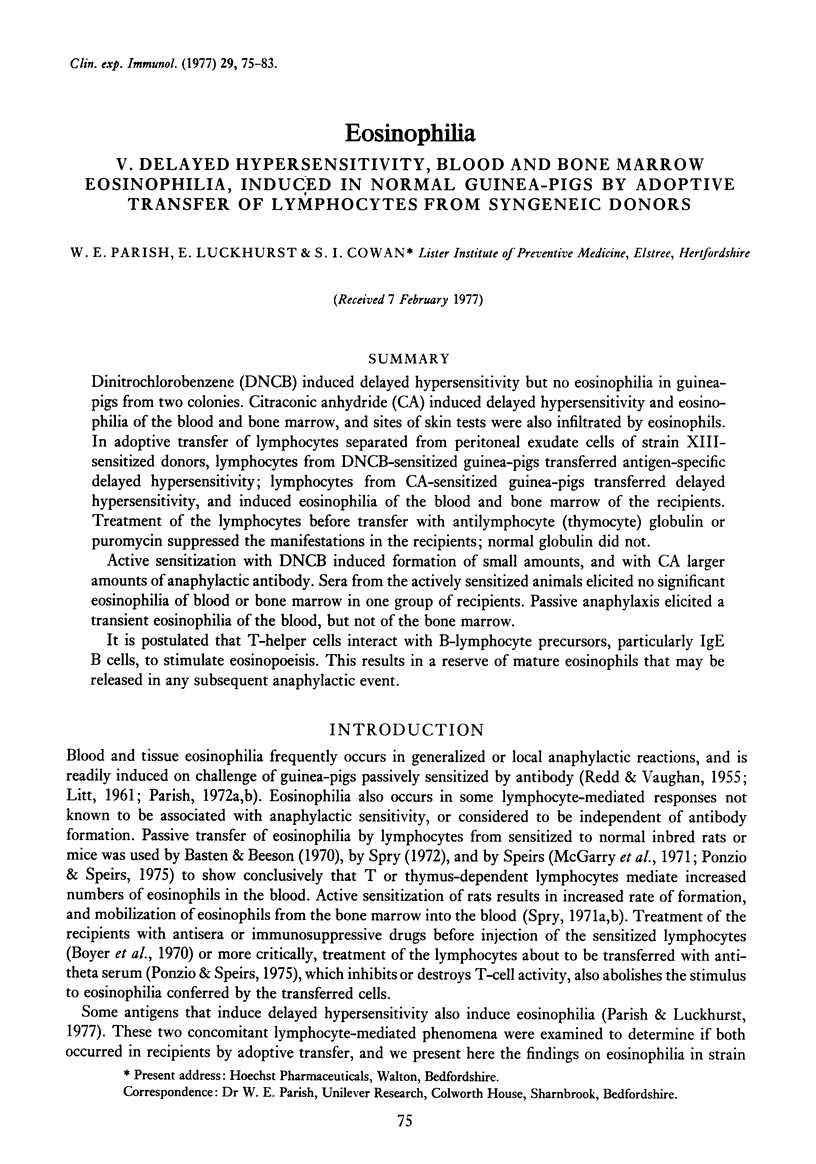
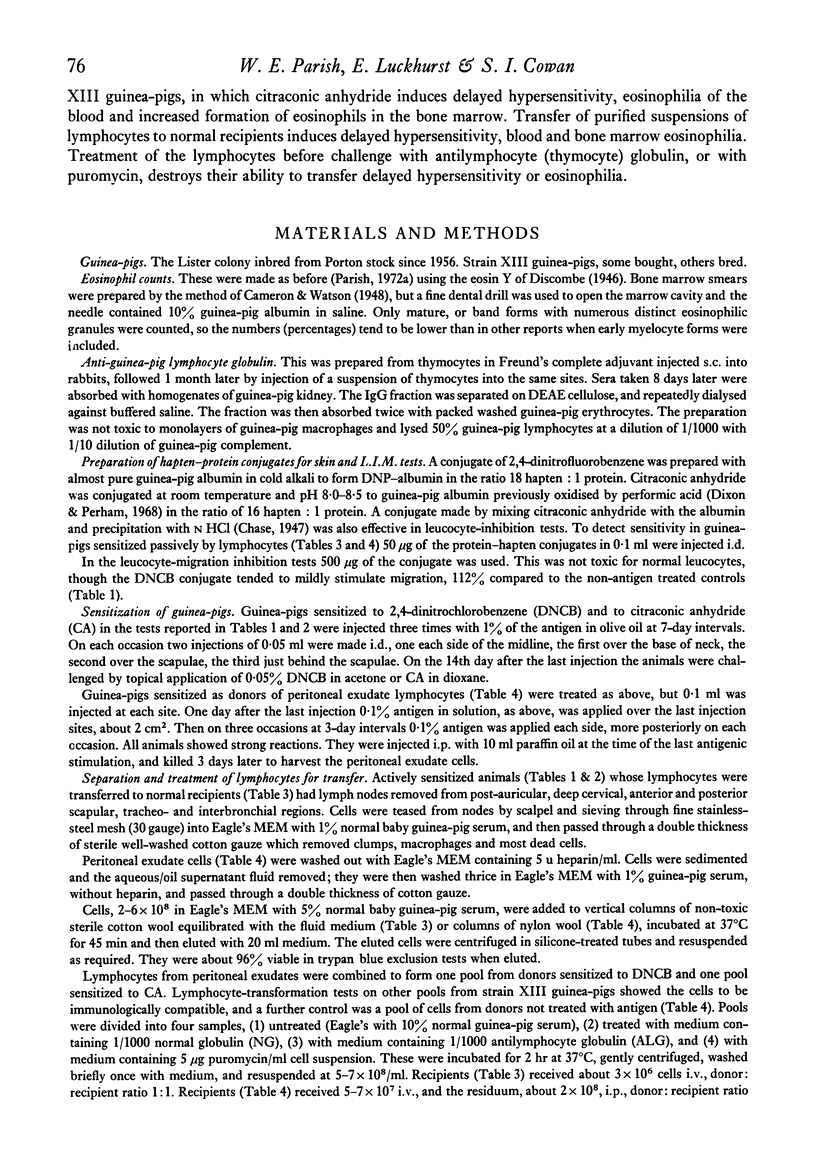
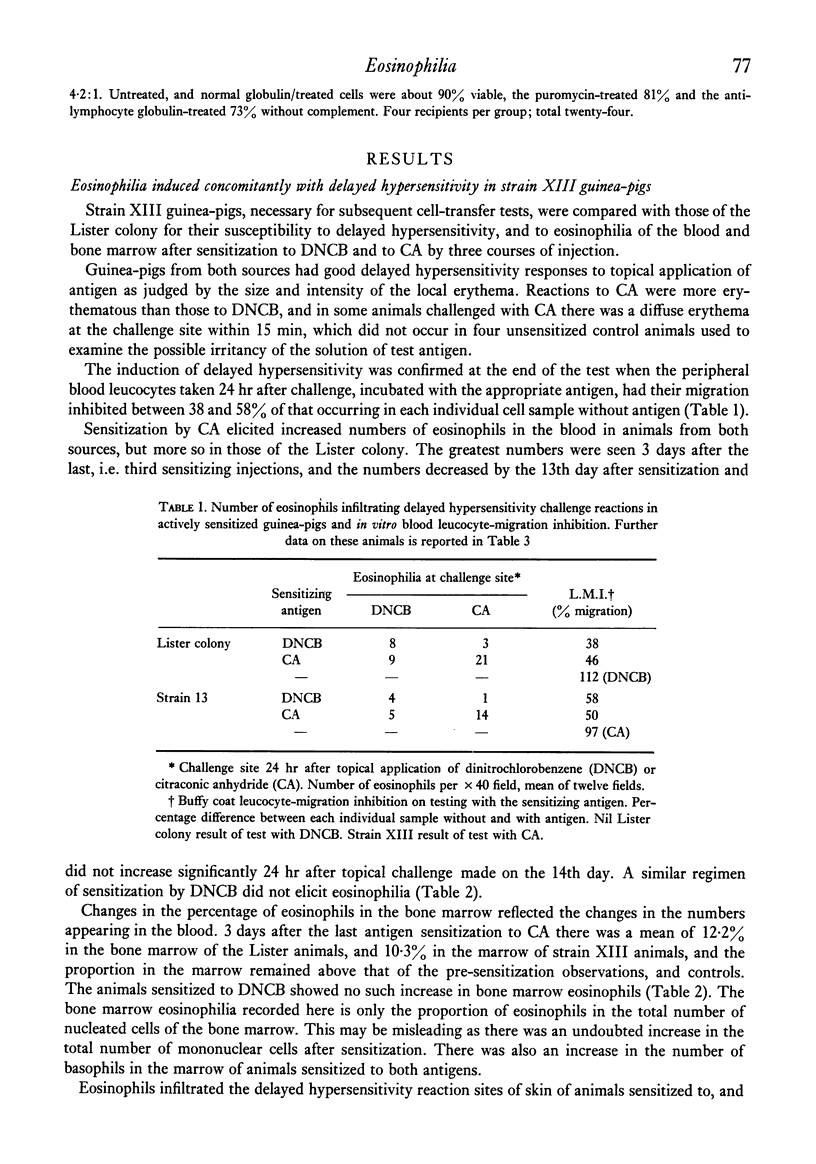

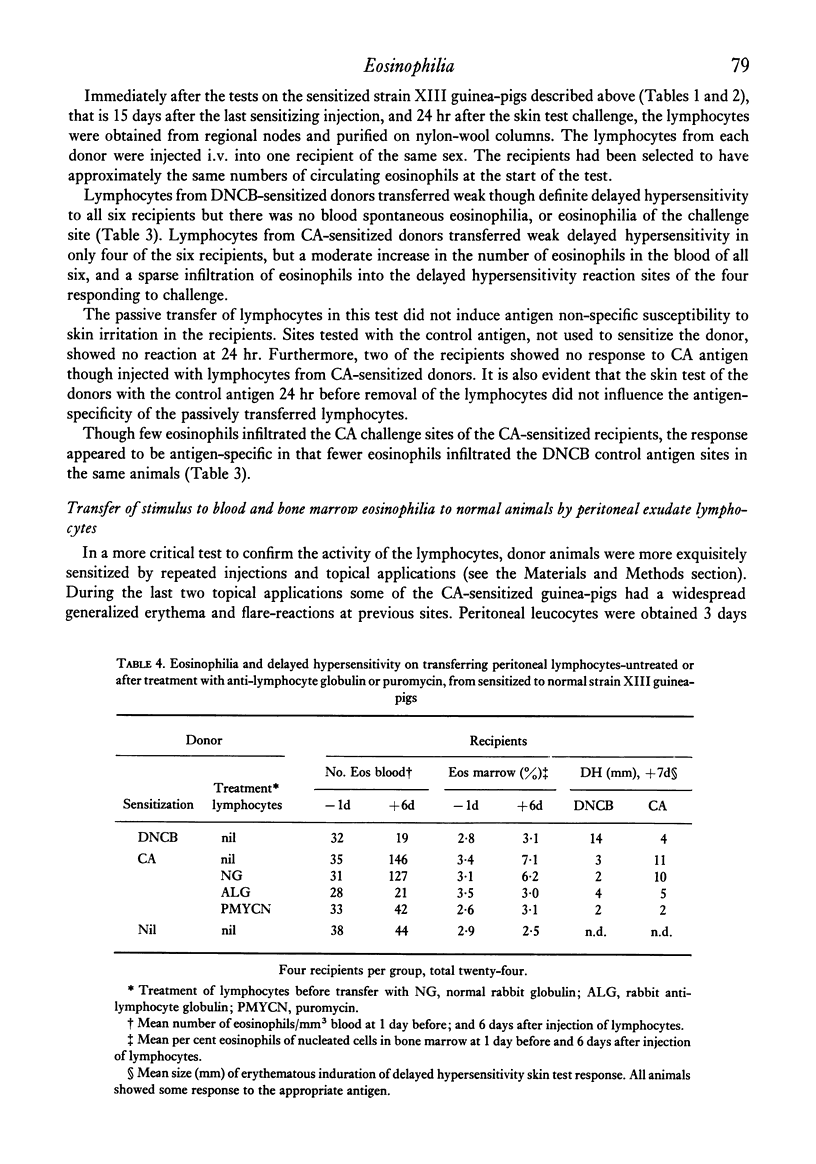
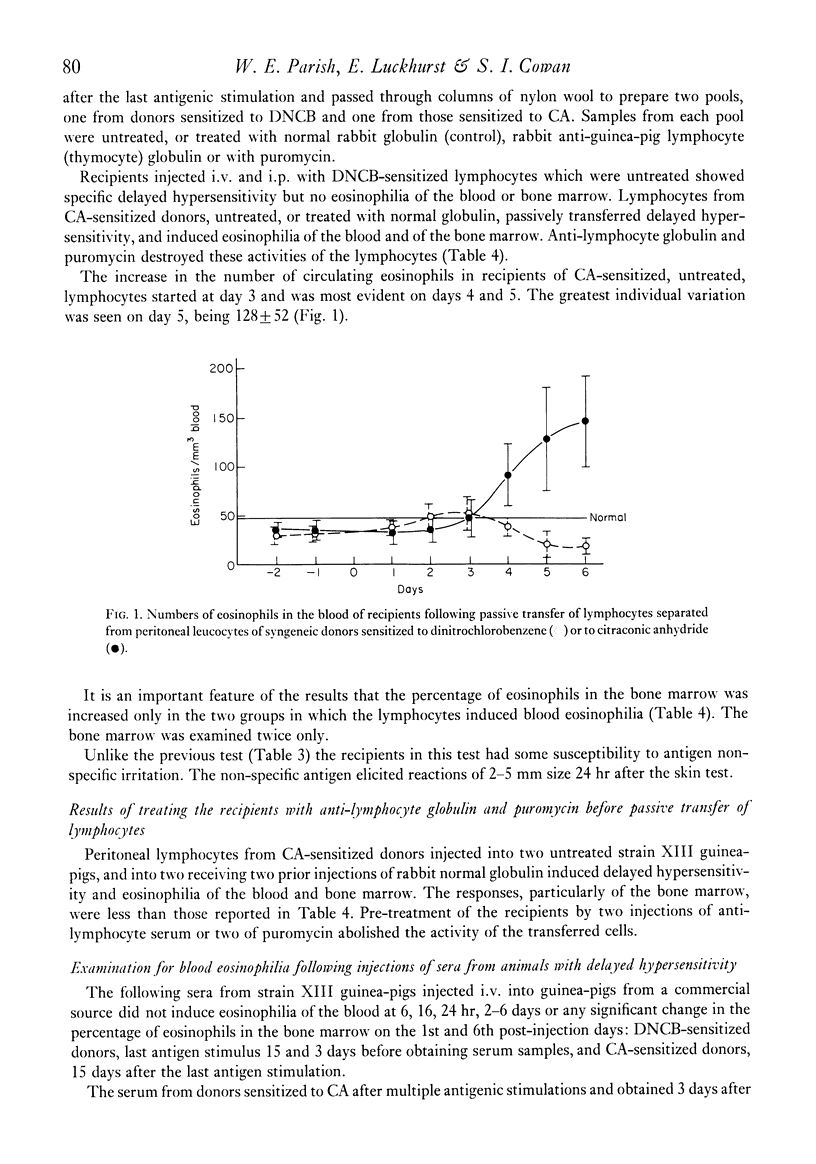
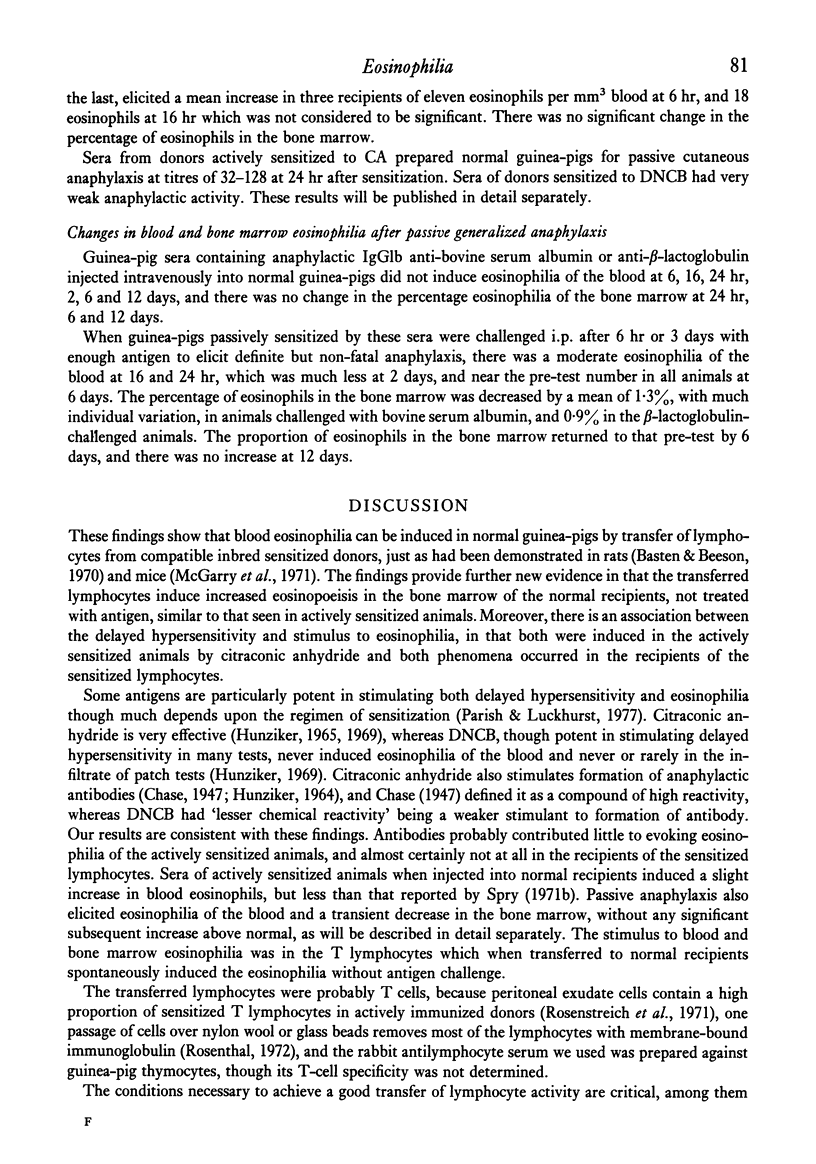
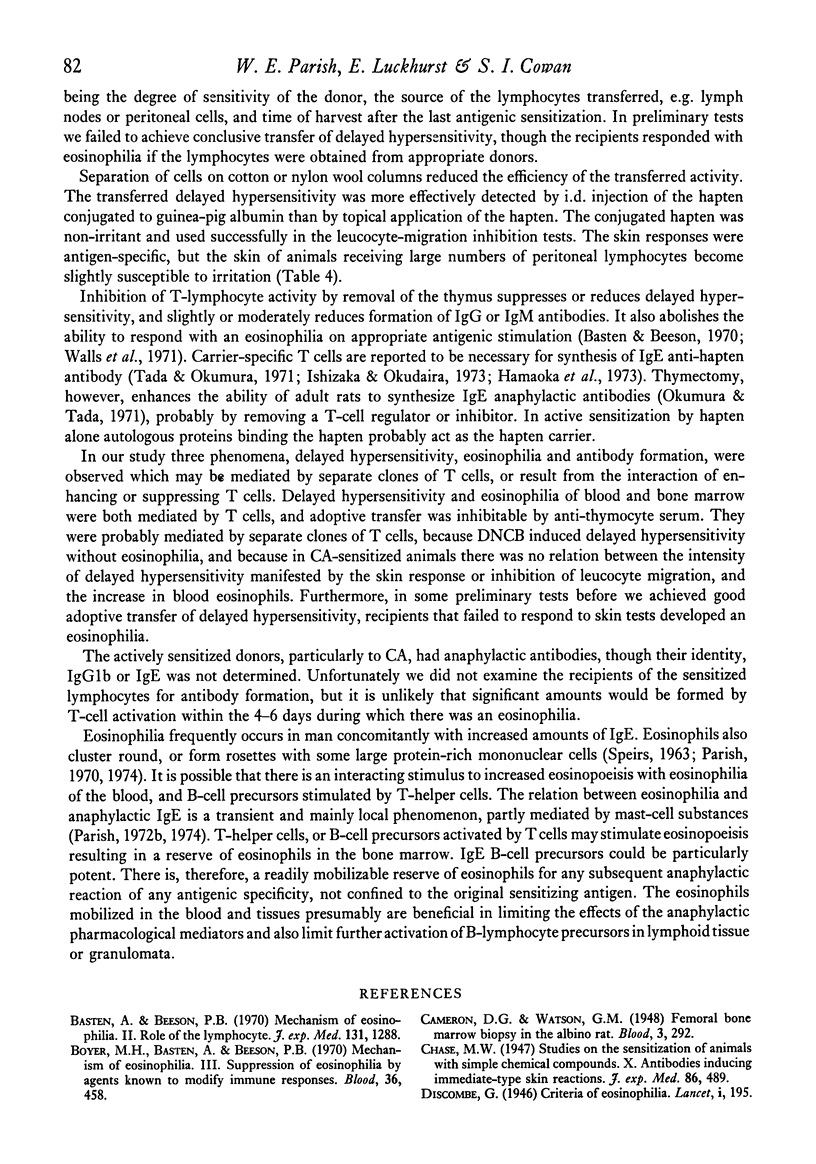
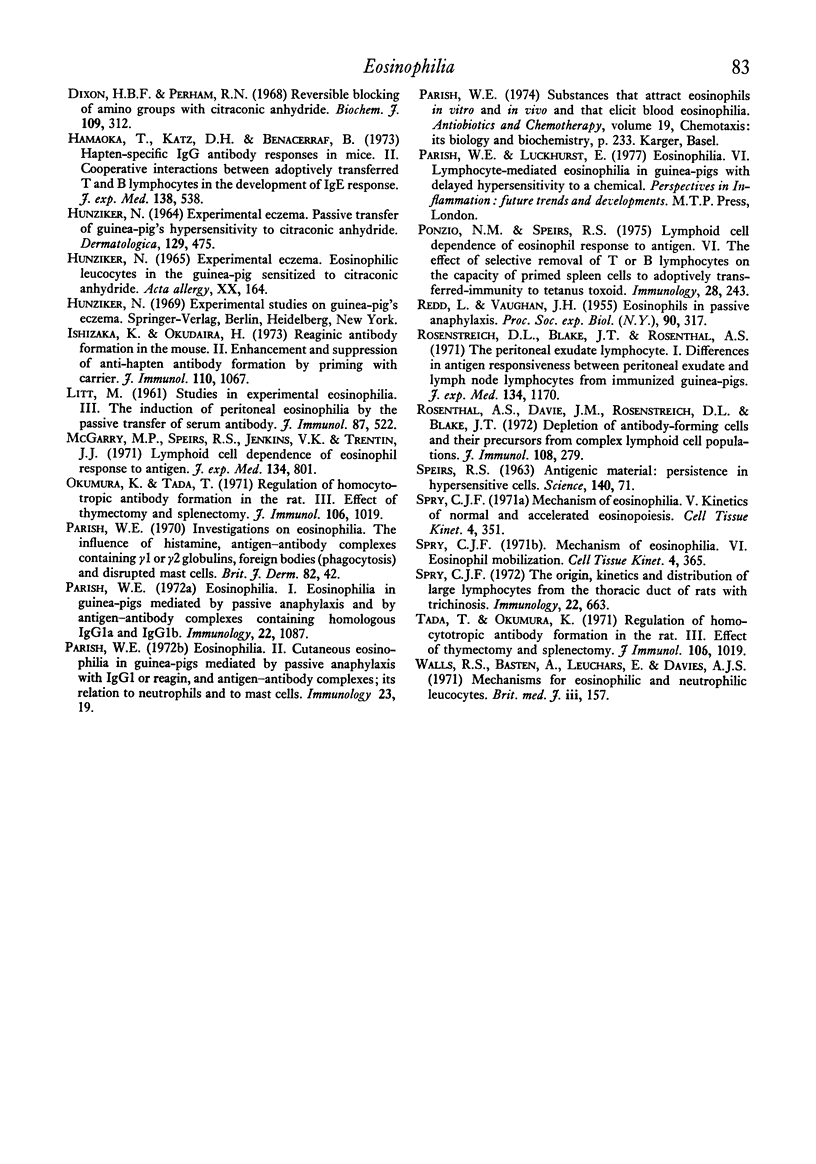
Selected References
These references are in PubMed. This may not be the complete list of references from this article.
- Basten A., Beeson P. B. Mechanism of eosinophilia. II. Role of the lymphocyte. J Exp Med. 1970 Jun 1;131(6):1288–1305. doi: 10.1084/jem.131.6.1288. [DOI] [PMC free article] [PubMed] [Google Scholar]
- Boyer M. H., Basten A., Beeson P. B. Mechanism of eosinophilia. 3. Suppression of eosinophilia by agents known to modify immune responses. Blood. 1970 Oct;36(4):458–469. [PubMed] [Google Scholar]
- Dixon H. B., Perham R. N. Reversible blocking of amino groups with citraconic anhydride. Biochem J. 1968 Sep;109(2):312–314. doi: 10.1042/bj1090312. [DOI] [PMC free article] [PubMed] [Google Scholar]
- HUNZIKER N. EXPERIMENTAL ECZEMA. (23). EOSINOPHILIC LEUCOCYTES IN THE GUINEA PIG SENSITIZED TO CITRACONIC ANHYDRIDE. Acta Allergol. 1965;20:164–170. [PubMed] [Google Scholar]
- HUNZIKER N. EXPERIMENTAL ECZEMA: "PASSIVE TRANSFER" OF GUINEA PIG'S HYPERSENSITIVITY TO CITROCONIC ANHYDRIDE. Dermatologica. 1964;129:475–478. [PubMed] [Google Scholar]
- Hamaoka T., Katz D. H., Benacerraf B. Hapten-specific IgE antibody responses in mice. II. Cooperative interactions between adoptively transferred T and B lymphocytes in the development of IgE response. J Exp Med. 1973 Sep 1;138(3):538–556. doi: 10.1084/jem.138.3.538. [DOI] [PMC free article] [PubMed] [Google Scholar]
- LITT M. Studies in experimental eosinophilia. III. The induction of peritoneal eosinophilia by the passive transfer of serum antibody. J Immunol. 1961 Nov;87:522–529. [PubMed] [Google Scholar]
- McGarry M. P., Speirs R. S., Jenkins V. K., Trentin J. J. Lymphoid cell dependence of eosinophil response to antigen. J Exp Med. 1971 Sep 1;134(3 Pt 1):801–814. doi: 10.1084/jem.134.3.801. [DOI] [PMC free article] [PubMed] [Google Scholar]
- Okumura K., Tada T. Regulation of homocytotropic antibody formation in the rat. 3. Effect of thymectomy and splenectomy. J Immunol. 1971 Apr;106(4):1019–1025. [PubMed] [Google Scholar]
- Okumura K., Tada T. Regulation of homocytotropic antibody formation in the rat. 3. Effect of thymectomy and splenectomy. J Immunol. 1971 Apr;106(4):1019–1025. [PubMed] [Google Scholar]
- Parish W. E. Eosinophilia. I. Eosinophilia in guinea-pigs mediated by passive anaphylaxis and by antigen-antibody complexes containing homologous IgG1a and IgG1b. Immunology. 1972 Jun;22(6):1087–1098. [PMC free article] [PubMed] [Google Scholar]
- Parish W. E. Eosinophilia. II. Cutaneous eosinophilia in guinea-pigs mediated by passive anaphylaxis with IgGl or reagin, and antigen-antibody complexes; its relation to neutrophils and to mast cells. Immunology. 1972 Jul;23(1):19–34. [PMC free article] [PubMed] [Google Scholar]
- Parish W. E. Investigations on eosinophilia. The influence of histamine, antigen-antibody complexes containing gamma-1 or gamma-2 globulins, foreign bodies (phagocytosis) and disrupted mast cells. Br J Dermatol. 1970 Jan;82(1):42–64. doi: 10.1111/j.1365-2133.1970.tb02193.x. [DOI] [PubMed] [Google Scholar]
- Parish W. E. Substances that attract eosinophils in vitro and in vivo, and that elicit blood eosinophilia. Antibiot Chemother (1971) 1974;19:233–270. doi: 10.1159/000395434. [DOI] [PubMed] [Google Scholar]
- Ponzio N. M., Speirs R. S. Lymphoid cell dependence of eosinophil response to antigen. VI. The effect of selective removal of T or B lymphocytes on the capacity of primed spleen cells to adoptively transferred immunity to tetanus toxoid. Immunology. 1975 Feb;28(2):243–251. [PMC free article] [PubMed] [Google Scholar]
- REDD L., VAUGHAN J. H. Eosinophiles in passive anaphylaxis. Proc Soc Exp Biol Med. 1955 Nov;90(2):317–319. doi: 10.3181/00379727-90-22020. [DOI] [PubMed] [Google Scholar]
- Rosenstreich D. L., Blake J. T., Rosenthal A. S. The peritoneal exudate lymphocyte. I. Differences in antigen responsiveness between peritoneal exudate and lymph node lymphocytes from immunized guinea pigs. J Exp Med. 1971 Nov 1;134(5):1170–1186. doi: 10.1084/jem.134.5.1170. [DOI] [PMC free article] [PubMed] [Google Scholar]
- Rosenthal A. S., Davie J. M., Rosenstreich D. L., Blake J. T. Depletion of antibody-forming cells and their precursors from complex lymphoid cell populations. J Immunol. 1972 Jan;108(1):279–281. [PubMed] [Google Scholar]
- SPEIRS R. S. Antigenic material: persistence in hypersensitive cells. Science. 1963 Apr 5;140(3562):71–72. doi: 10.1126/science.140.3562.71. [DOI] [PubMed] [Google Scholar]
- Spry C. J. Mechanism of eosinophilia. V. Kinetics of normal and accelerated eosinopoiesis. Cell Tissue Kinet. 1971 Jul;4(4):351–364. [PubMed] [Google Scholar]
- Spry C. J. Mechanism of eosinophilia. VI. Eosinophil mobilization. Cell Tissue Kinet. 1971 Jul;4(4):365–374. [PubMed] [Google Scholar]
- Spry C. J. The origin, kinetics and distribution of large lymphocytes from the thoracic duct of rats with trichinosis. Immunology. 1972 Apr;22(4):663–675. [PMC free article] [PubMed] [Google Scholar]
- Walls R. S., Basten A., Leuchars E., Davies A. J. Mechanisms for eosinophilic and neutrophilic leucocytoses. Br Med J. 1971 Jul 17;3(5767):157–159. doi: 10.1136/bmj.3.5767.157. [DOI] [PMC free article] [PubMed] [Google Scholar]


